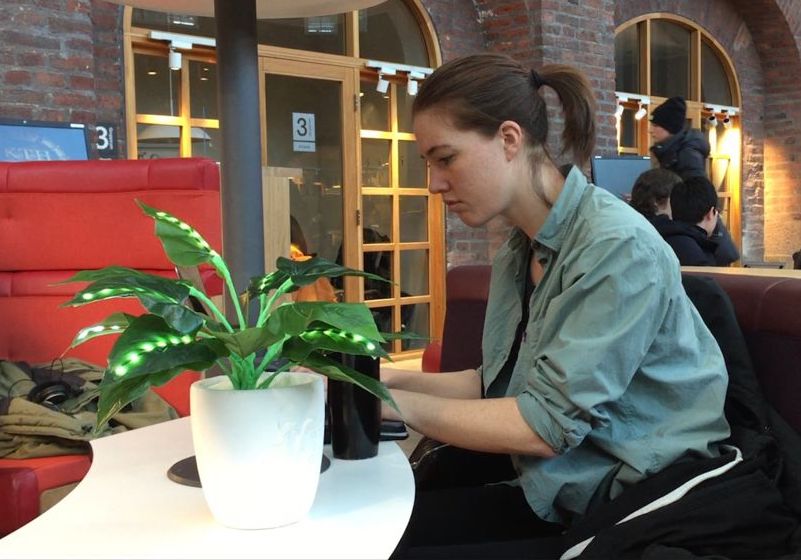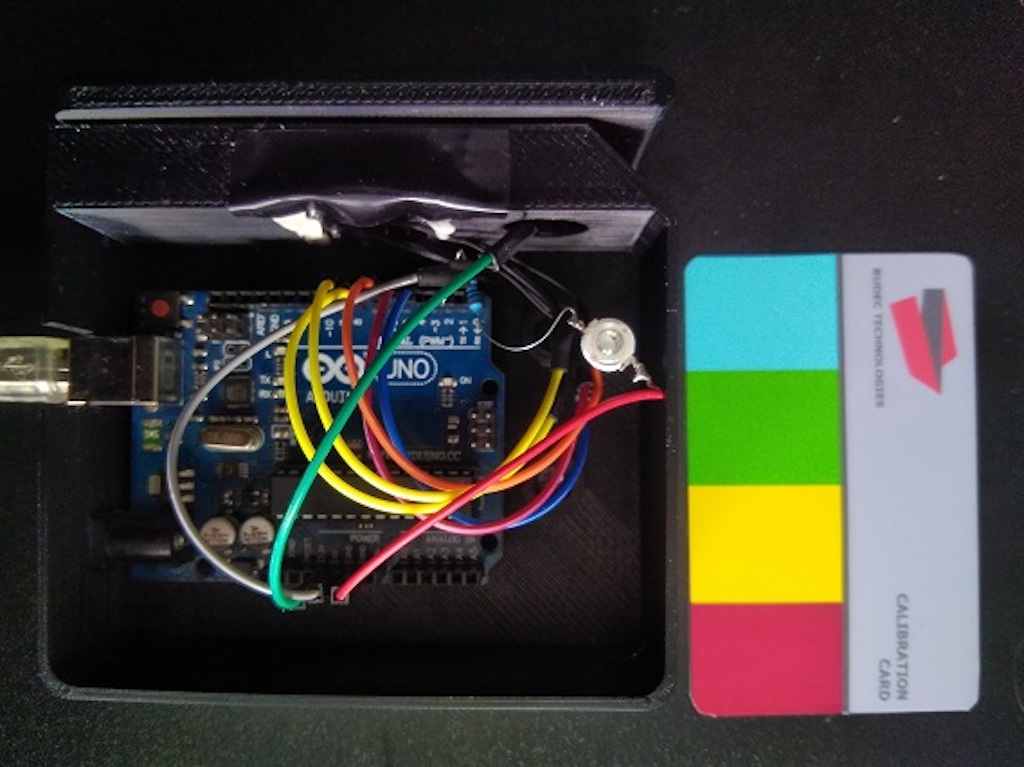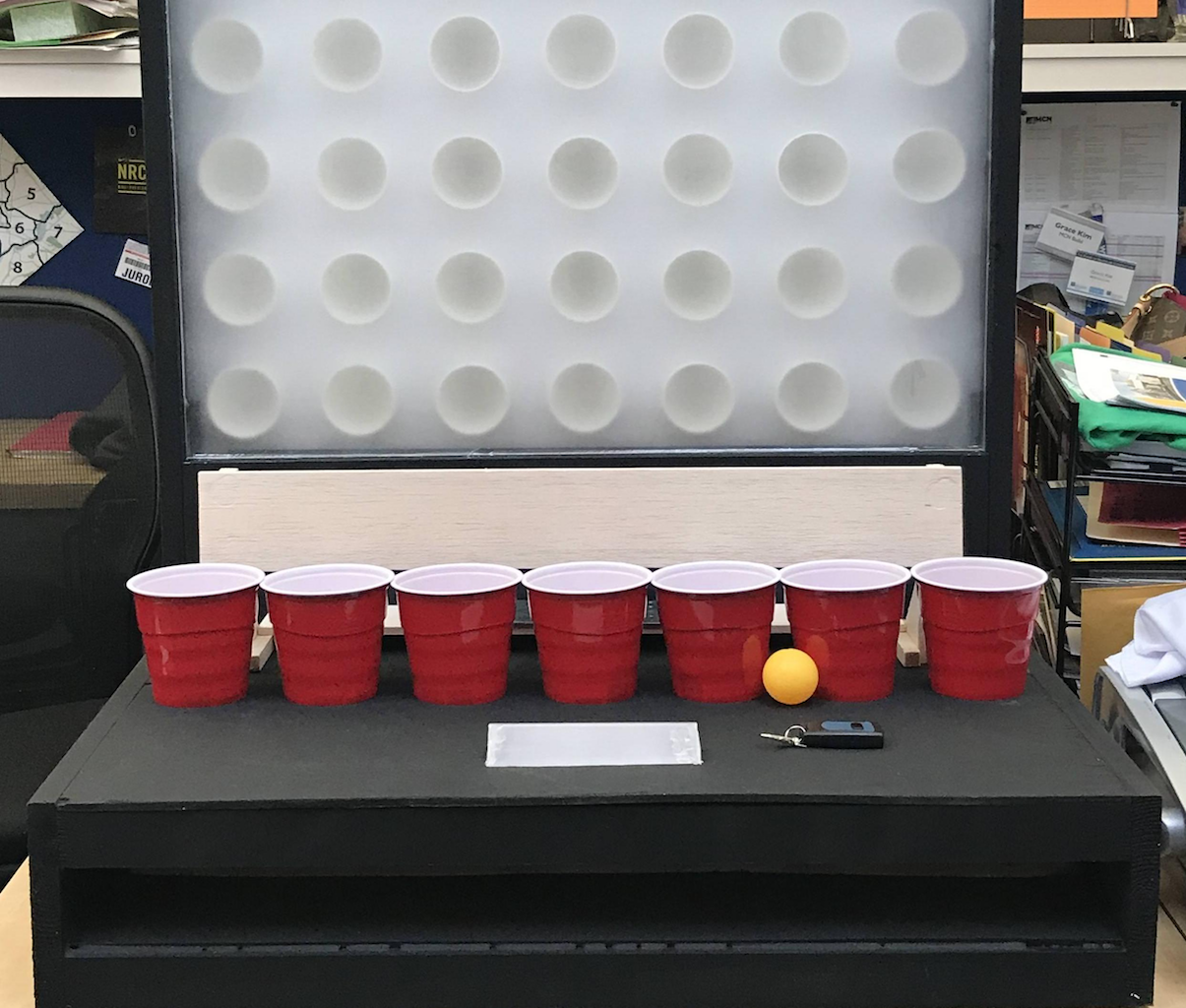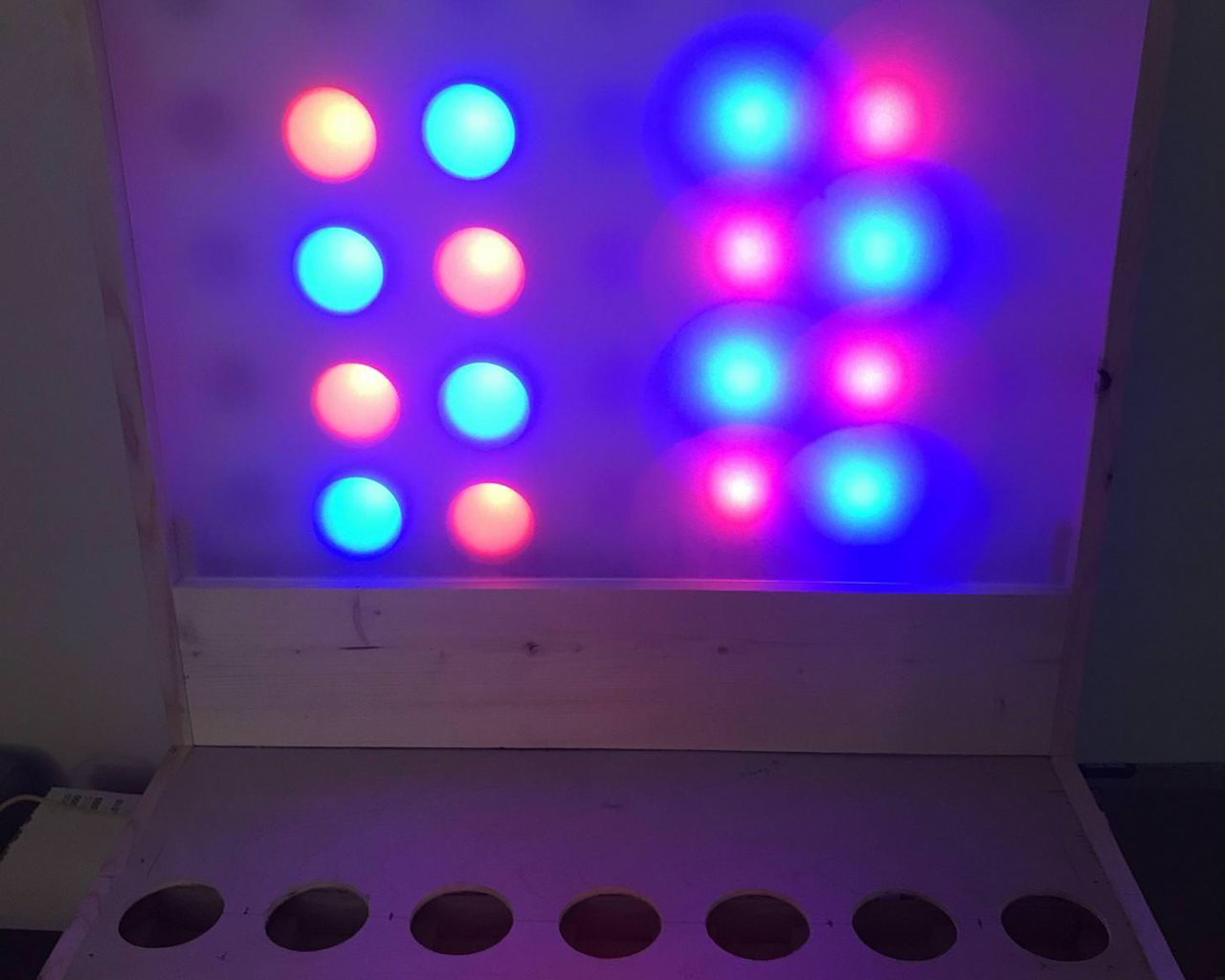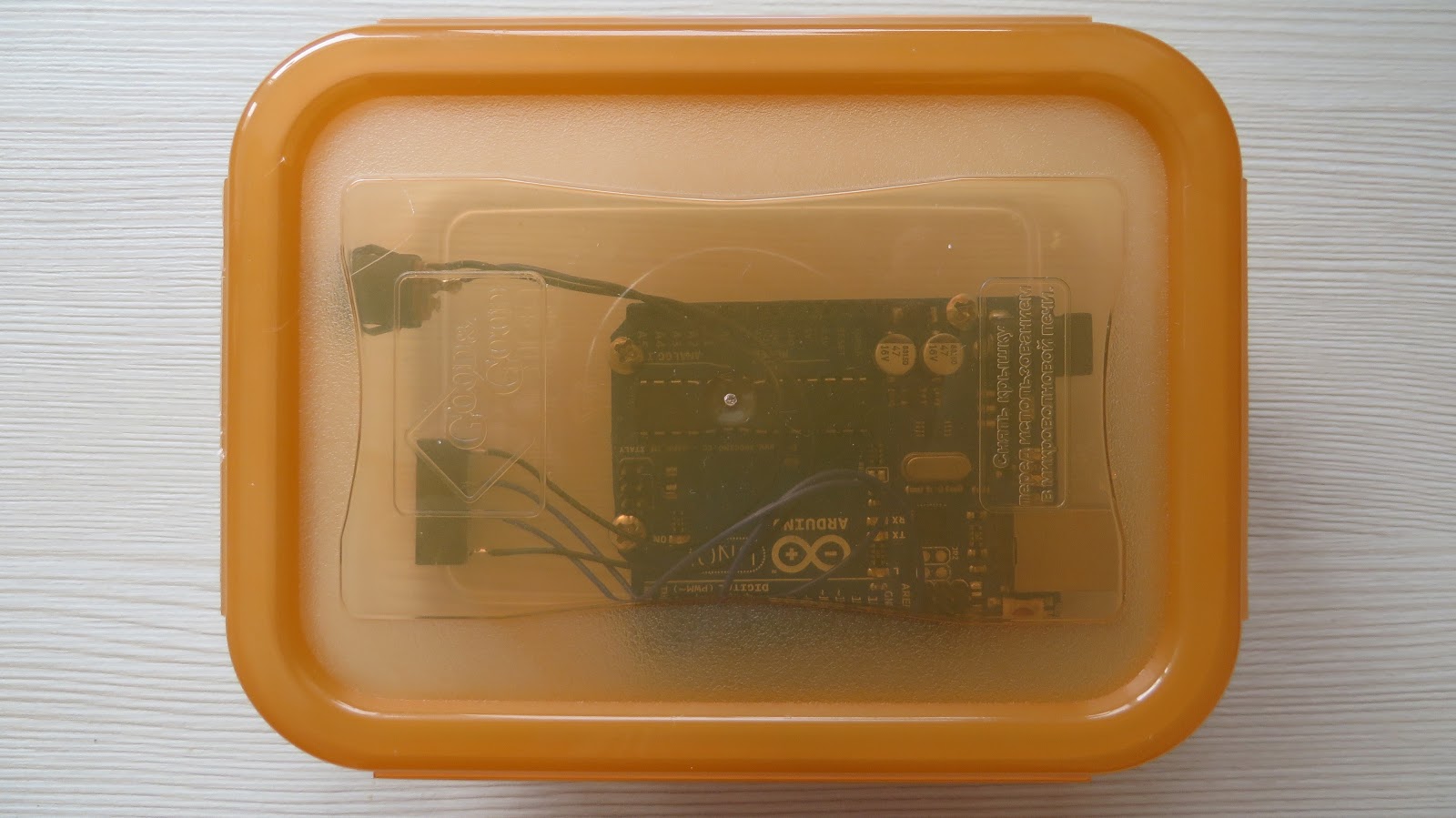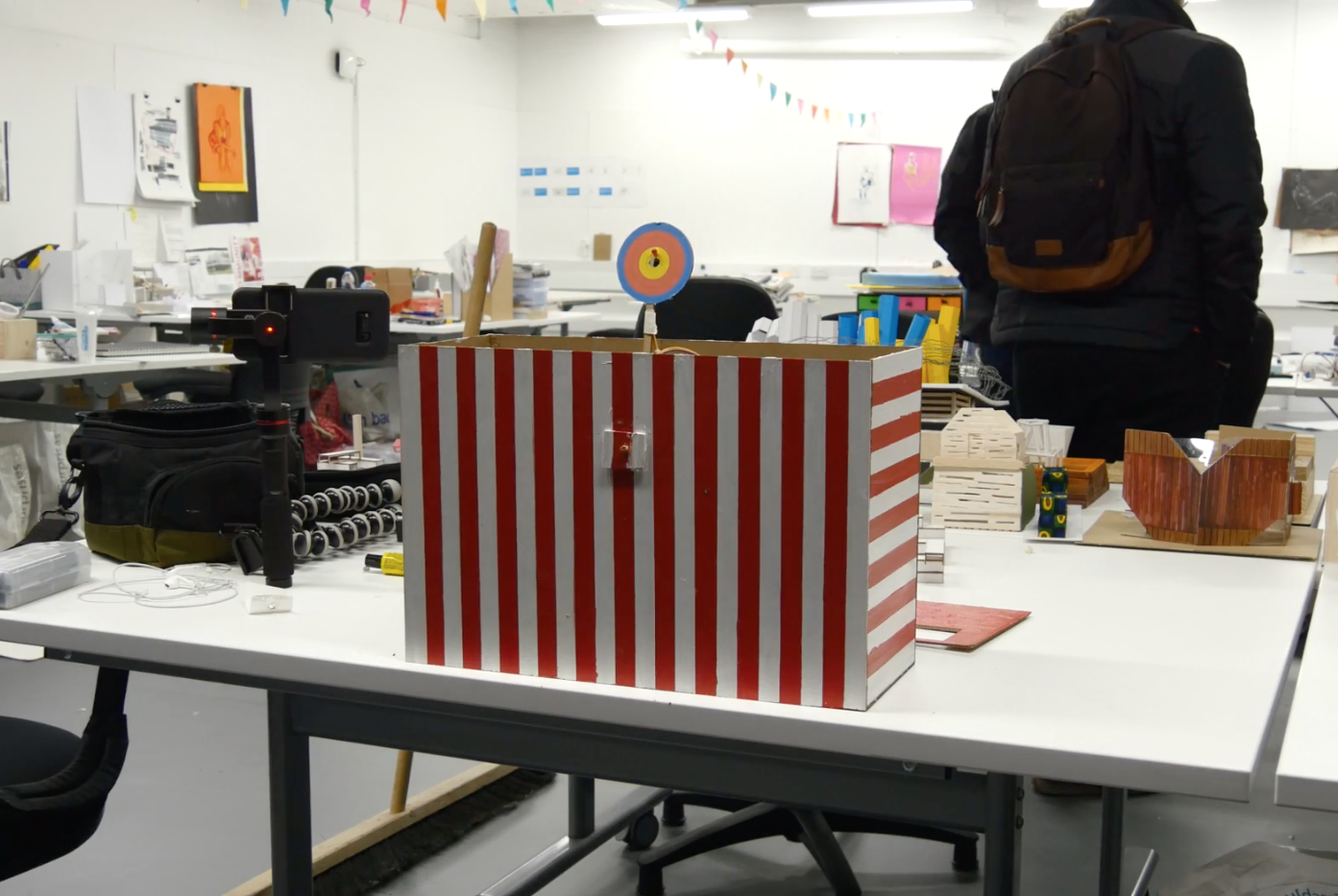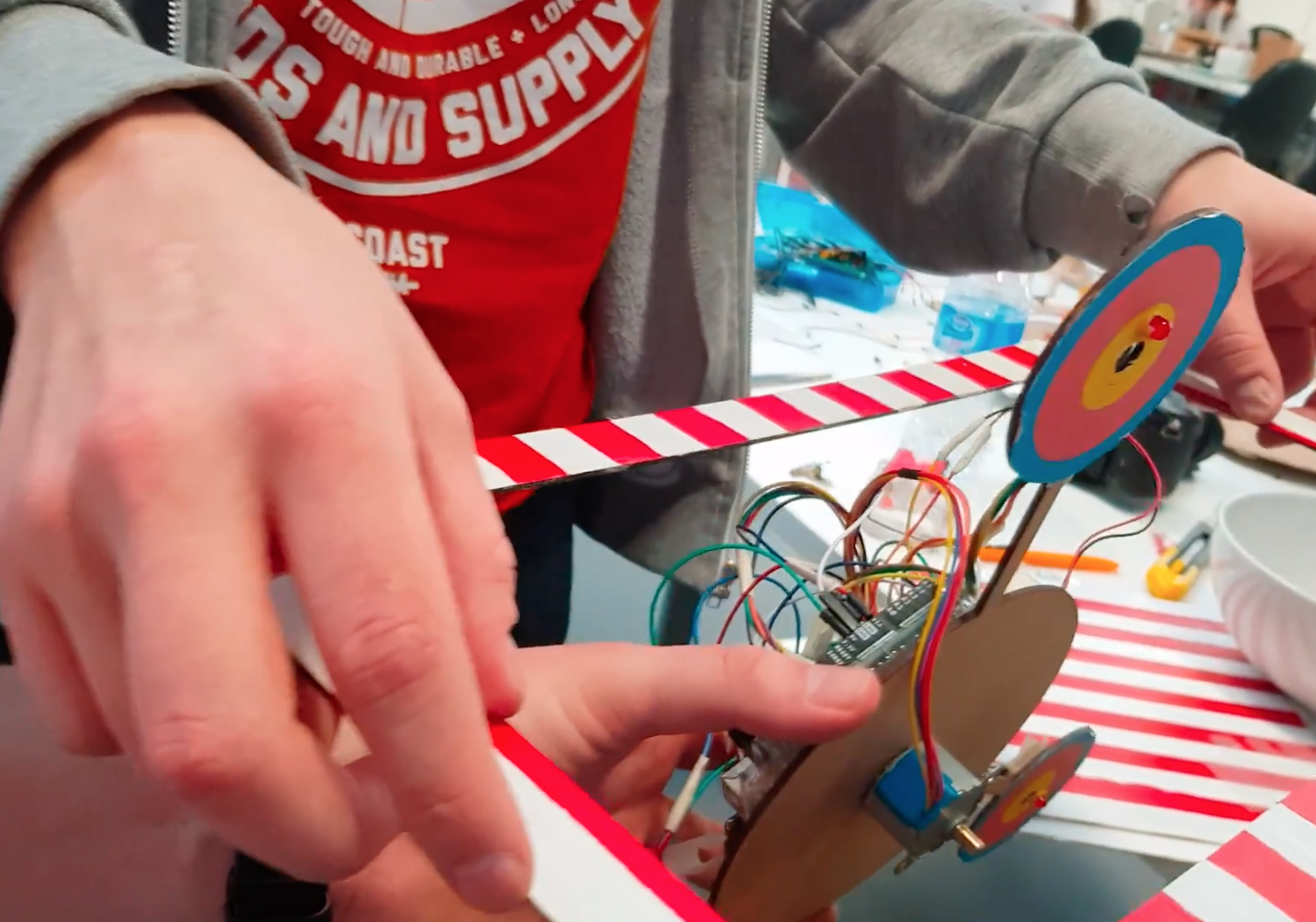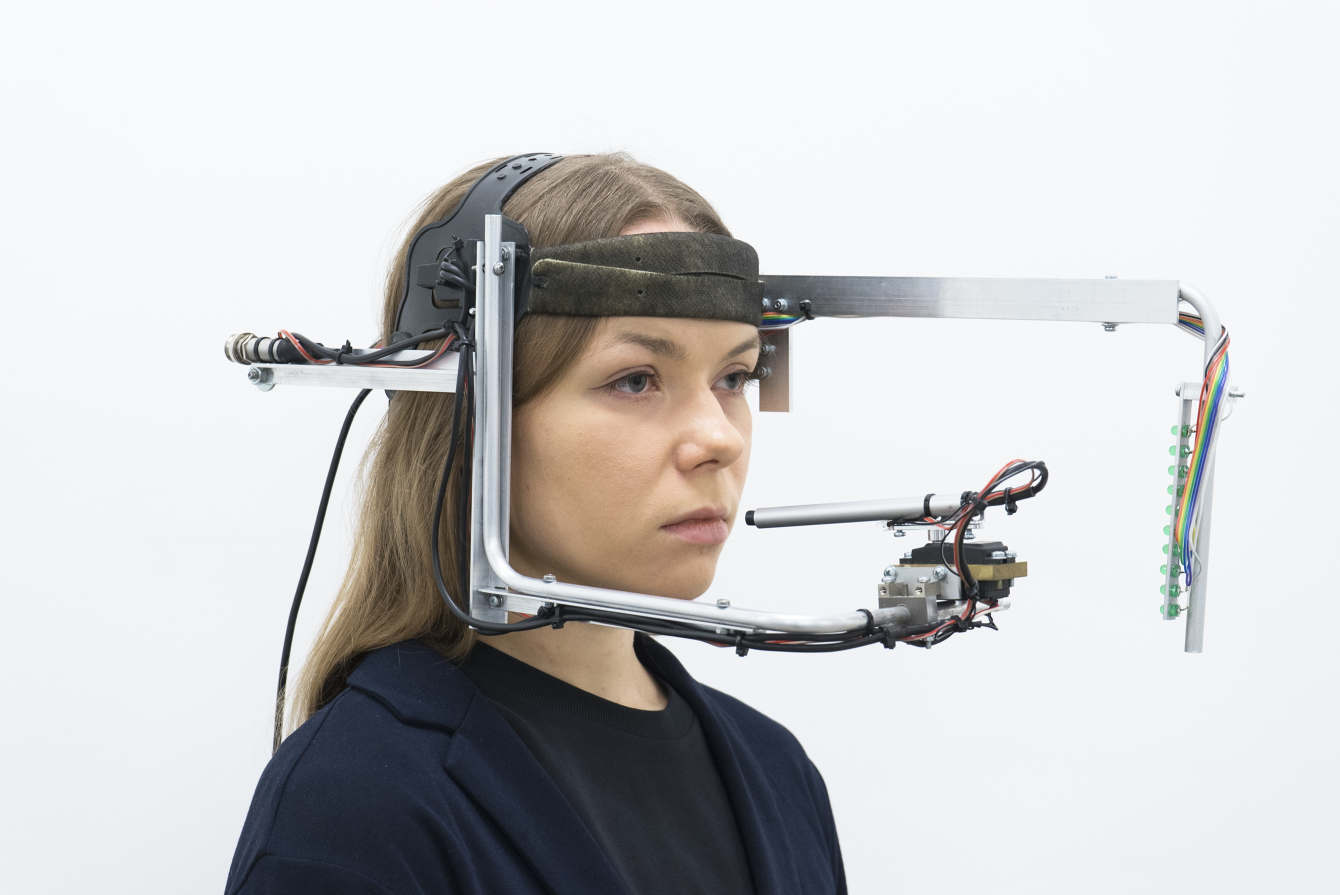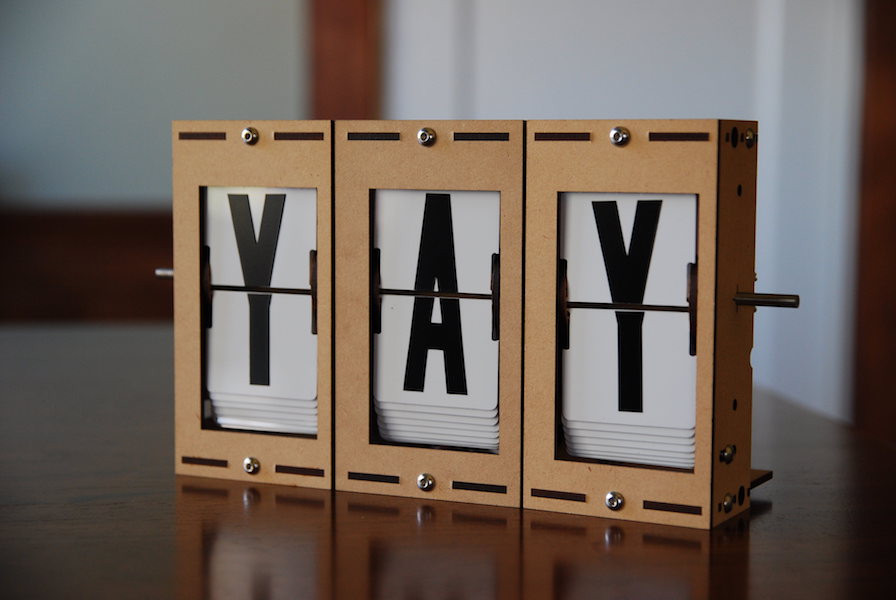A beautifully finished Arduino temperature and humidity sensor
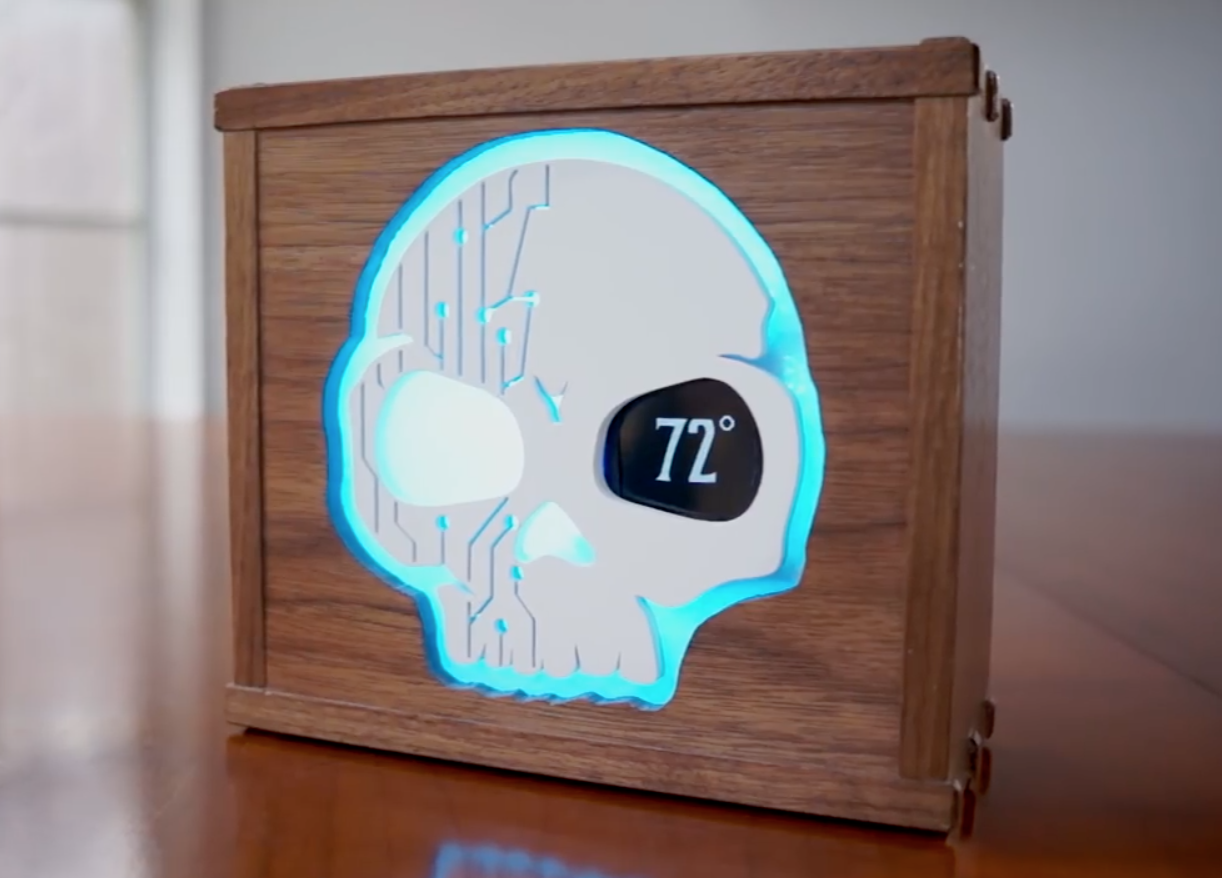
Jay and Jamie wanted a temperature and humidity sensor for their workshop. Instead of buying something off the shelf or hooking up an Arduino with the proper sensor and breadboard, they went the extra mile.
The duo crafted a beautiful walnut enclosure—compete with a 3D-printed logo and a clever opening for the temperature display using an LCD screen. Humidity is indicated by the color of a NeoPixel ring, which shines through the artwork via a frosted plastic as a diffuser.
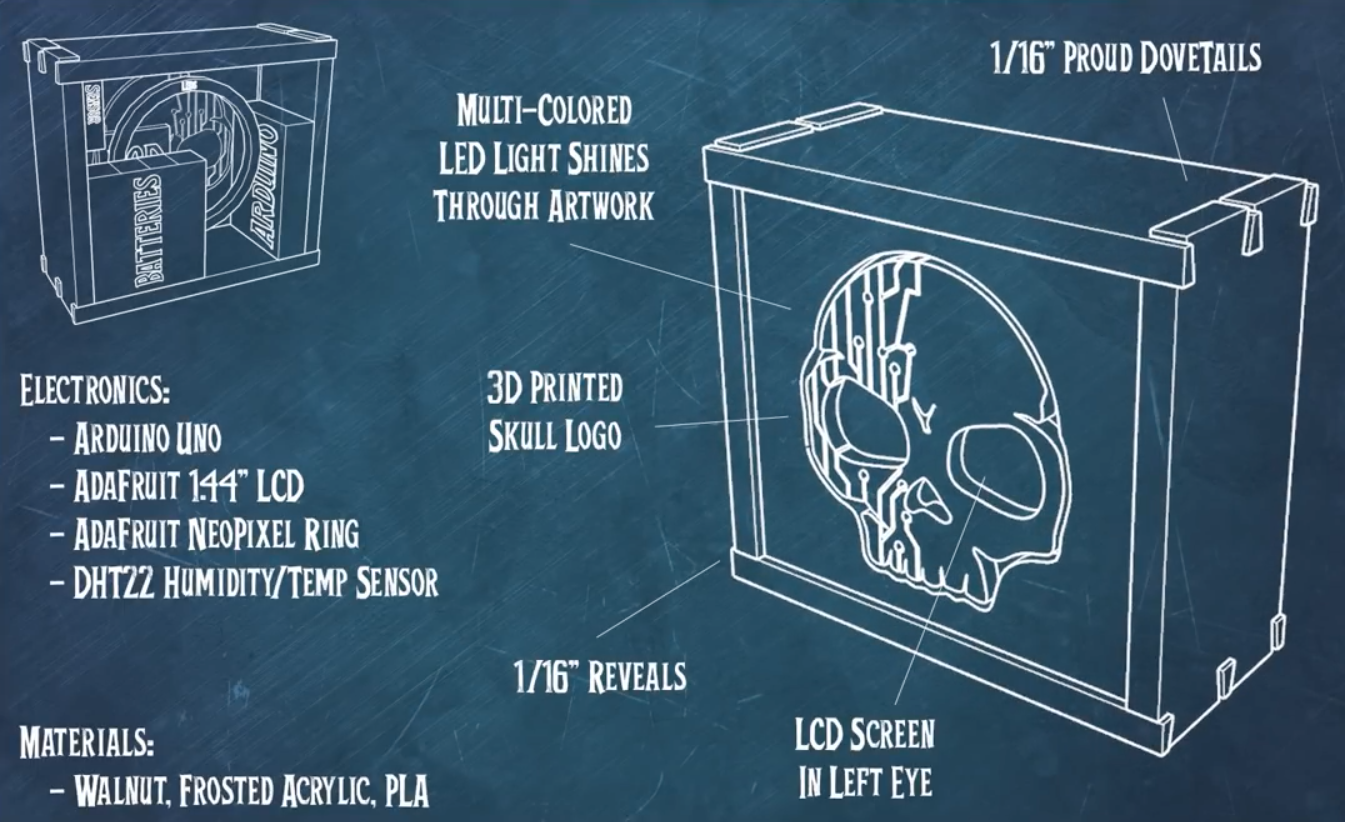
It’s immaculate on the outside, while hot glue is used extensively inside to hold everything in place. An Arduino Uno powers the build, attached by a handy plastic case.
We live in Central Texas where we get massive swings in humidity and temperature in the spring, which can be disastrous for certain woodworking projects. This cool project helps alert us when the humidity is changing or starts to get high so we can take precautions like moving our wood projects into the house, or not doing any milling during the high humidity weather. It also looks awesome and has our sweet logo.
Be sure to check out their entertaining video for lots of tips and tricks to make your project look excellent!


